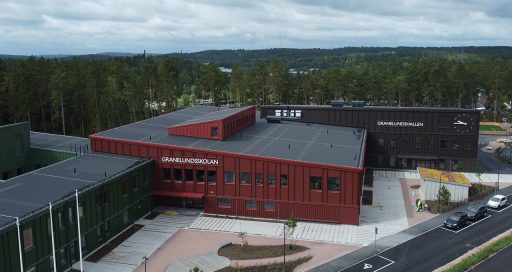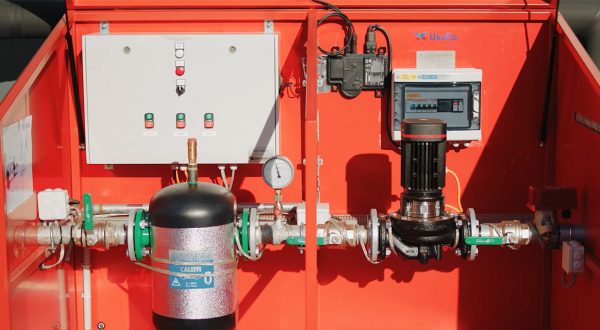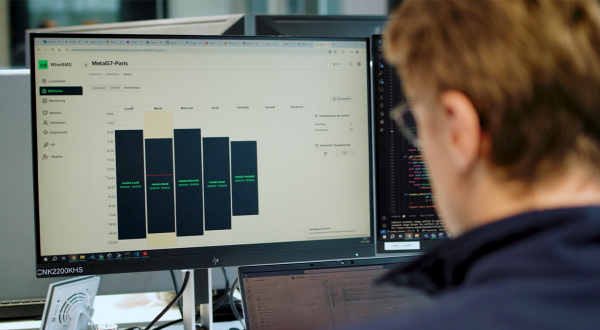Collaborative project for a sustainable school in Sweden
Reading time: 3 min
In Tranås, Sweden, a brand-new school is combining modernity, functionality and sustainability. The expertise behind the school’s innovative and ecological electrical installations belongs to the VINCI Energies subsidiary Emil Lundgren.

When they went back to school in 2025, students in the town of Tranås, Sweden, discovered a brand-new establishment: Granelundsskolan, located in the Norraby. district. The fruit of a collaboration between the municipal authority, AB Tranåsbostäder (the town’s property management firm), the construction company NCC, and various architects and consultants, the designed to combine functionality, sustainability and aesthetic appeal.
Covering 8,400 sq. metres across three interconnected blocks, the school can accommodate up to 600 pupils from nursery age to Year Six. It includes classrooms, childminding facilities, a large canteen and a 300-seat sports hall, and was built in line with the Swedish Green Building Council (SGBC) Silver criteria.
The VINCI Energies subsidiary Emil Lundgren was closely involved in this collaborative project, taking responsibility for all the electrical installations. Its project manager, Alexander Almegård, looks back at a human and technical adventure that lasted more than two years. “We were involved from the earliest stages, working on the design and the creation of technical documents,” he recalls.
The Emil Lundgren team set to work on the design phase in spring 2023, moving on to production from January 2024. “At the project’s height, we had 12 or 14 installers working. It was completed in May 2025, ready for school to start again in the autumn.”
A technical, ecological and organisational challenge
Emil Lundgren mobilised all its expertise for this project, providing interior and external lighting, the electrical power supply, optical fibre, security and communication systems, and parts of ventilation and climate control, not to mention a sizeable solar installation.
“We were able to team up experienced installers with younger employees so the latter could acquire hands-on experience of a complex sustainable project”
“We installed 400 solar panels with combined power of 172 kWp, which produce energy throughout the day. We have also prepared the equipment for adding storage batteries in the future,” says Alexander Almegård.
As well as the technical performance, the project’s ecological dimension was embraced immediately. “In the design phase, we suggested luminaires with low environmental impact. Compact cardboard enclosures reduce the carbon footprint of some by 81%, while others use pine plywood with birch veneer.”
The challenge was not only technical and ecological, but also organisational. “As electrical installers, we depend heavily on the other trades making progress,” explains Alexander Almegård. “Planning and collaboration were the keys. We worked with exclusively digital plans, which facilitated checking and reduced errors.”
He adds that the cooperation with NCC and the other partners was exemplary. “This was a collaborative project. The project managers, customers, consultants and installers all shared the same vision. Other providers helped us with some tasks in a real demonstration of valuable mutual aid.”
This project was also an opportunity for sharing expertise. “We were able to team up experienced installers with younger employees so the latter could acquire hands-on experience of a complex sustainable project.”
11/14/2025





